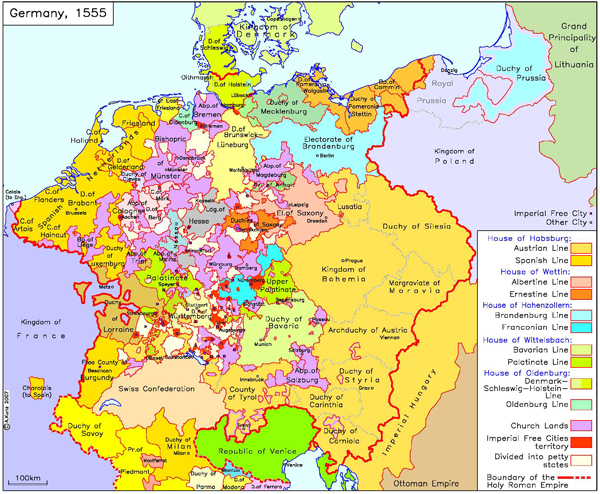|
Germany with Imperial and other Cities (c. 1555)
By 1555, after the Schmalkaldic War of 1546/47 between Emperor Charles V and the Protestant princes and cities and the Religious Peace of Augsburg (1555), the Holy Roman Empire had assumed the basic constitution it would retain until its dissolution in 1803. From late 1520s on, the ruling Habsburg dynasty held the crowns of Bohemia and Hungary, together with the lordship of the seventeen provinces of the Netherlands. Leading princely dynasties had established stronger territorial positions. The Hohenzollerns, seated in Franconia and Brandenburg, added the duchy of Prussia to their dominions in 1525, while the Wittelsbach dukes of Bavaria commanded a strong power base in southern Germany. Saxony underwent a shift that was advantageous to the Albertine line and disadvantageous to the Ernestine line, which had led the Protestant party and the revolt against Charles V. Very stable, on the other hand, was the Swiss Confederation, which already roughly corresponded to the later (since 1648) independent Switzerland. Please click on print version (below) for a PDF file with enhanced resolution. This file is best viewed at 200-300%.

IEG-Maps, Institute of European History, Mainz / © A. Kunz, 2007
Cartographer: Joachim Robert Moeschl
|














 print version
print version return to map list
return to map list previous map
previous map
